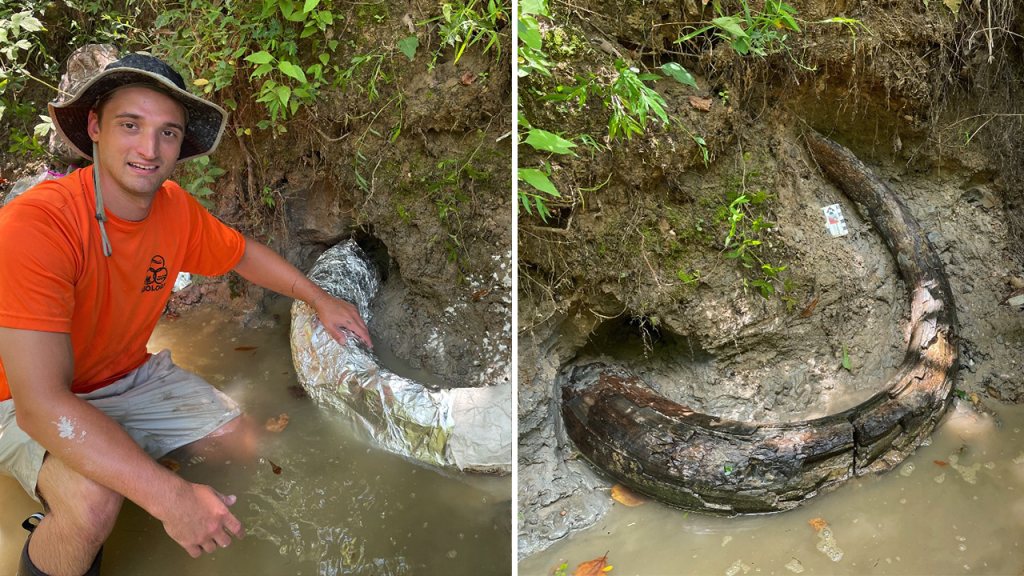An artifact and fossil collector named Eddie Templeton made a remarkable discovery in Madison County, Mississippi, when he stumbled upon a portion of an Ice Age-era, Columbian mammoth tusk exposed in a steep embankment. Templeton promptly alerted the Mississippi Department of Environmental Quality (MDEQ), leading to a collaboration between DEQ’s Mississippi State Geological Survey scientists and the Mississippi Museum of Natural Science to properly excavate and stabilize the tusk. After spending a day cleaning the tusk, the team confirmed that it belonged to a Columbian mammoth, the first of its kind to be found in the area. The tusk, measuring 7 feet in length, provided valuable insights into the prehistoric fauna that once inhabited the region.
Paleontologists at the Mississippi Museum of Natural Science highlighted the significance of the find, explaining that during the last ice age, Mississippi was home to three types of Proboscideans: the Mastodon, Gomphothere, and the Columbian mammoth. The Columbian mammoth, larger than the woolly mammoths found in colder regions of North America, played a crucial role in maintaining the ecosystem of the rich fertile prairies in Madison County. These colossal mammals coexisted with other now-extinct creatures such as giant bison, giant ground sloths, and tapirs. The excavation process involved creating a plaster jacket around the fossil to further study the animal’s history and the circumstances surrounding its preservation.
Field scientists working on the mammoth tusk specimen surmised that the animal likely died nearby and its remains were subsequently carried along the stream’s channel, where it was eventually covered in alluvium during a major flooding event. The evidence suggested that the tusk had been leaning against an ancient sandbar before becoming partially buried in the stream bed. This unique discovery provided a rare glimpse into the world of Columbian mammoths in central Mississippi and shed light on the prehistoric environment that existed in the region during the ice age. Eddie Templeton’s find was a valuable contribution to the study of ancient fauna and the geological history of the area.
The collaboration between Templeton, MDEQ, and the Mississippi Museum of Natural Science showcased the importance of public participation in the preservation and study of archaeological and paleontological finds. By working together, the team was able to properly excavate and stabilize the mammoth tusk, ensuring that it could be studied and preserved for future generations. The discovery of the tusk opened up new avenues of research into the prehistoric animals that once roamed Mississippi and provided valuable insights into the ecosystem of the region during the ice age. The meticulous process of cleaning and studying the tusk revealed details about the animal’s life and the environmental conditions in which it lived.
Overall, Eddie Templeton’s discovery of the Columbian mammoth tusk in Madison County, Mississippi, was a significant find that enriched our understanding of the region’s prehistoric past. The collaboration between Templeton, MDEQ, and the Mississippi Museum of Natural Science demonstrated the importance of public engagement in the preservation and study of archaeological and paleontological discoveries. The tusk, belonging to a majestic Columbian mammoth, offered a rare glimpse into the ancient ecosystem that existed in central Mississippi during the ice age. Through careful excavation and analysis, scientists were able to uncover the tusk’s history and shed light on the life of these colossal mammals that once roamed the prairies of Madison County. The discovery serves as a testament to the rich biodiversity that once thrived in the region and the importance of preserving our geological and paleontological heritage for future generations.













